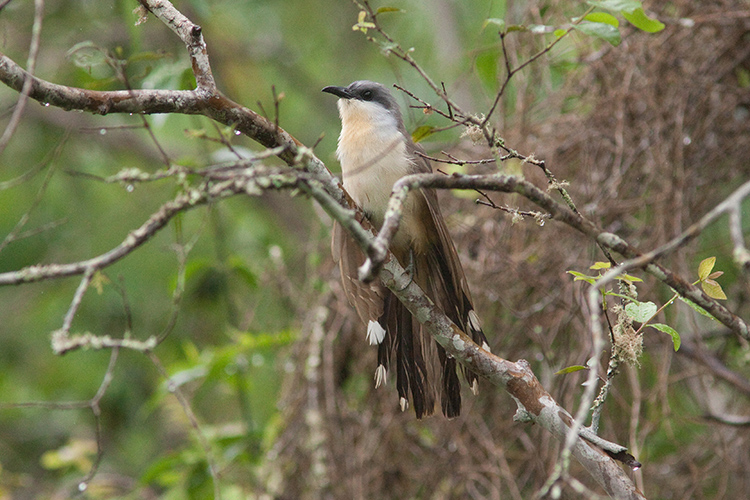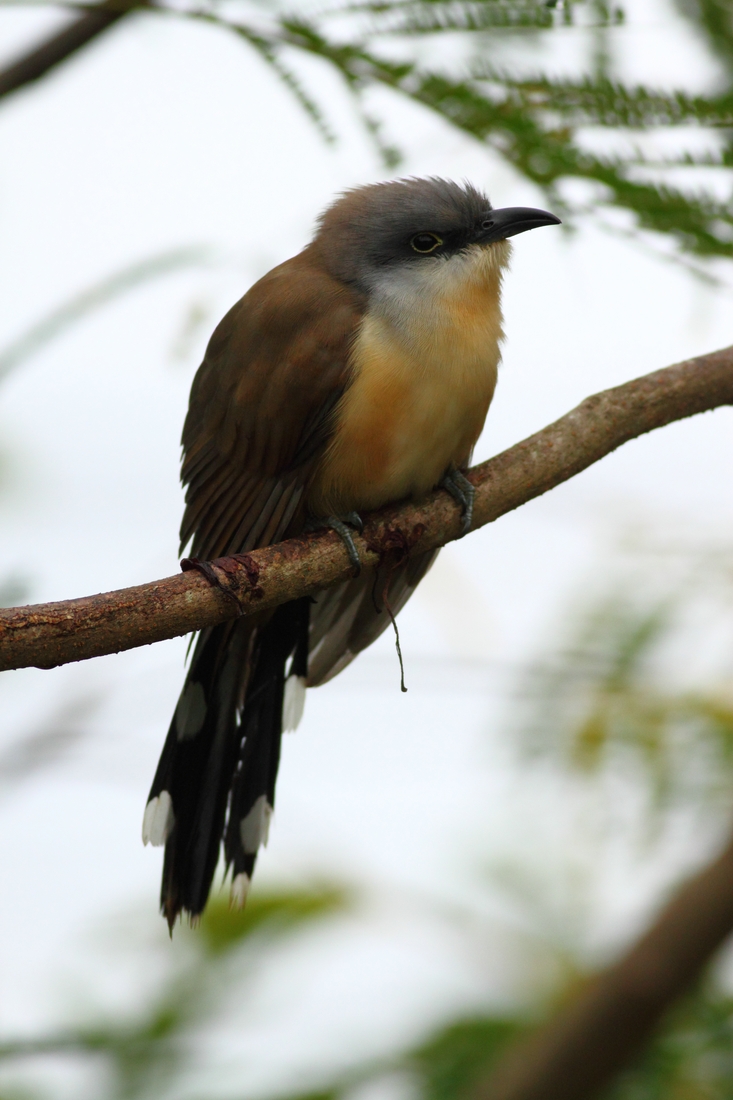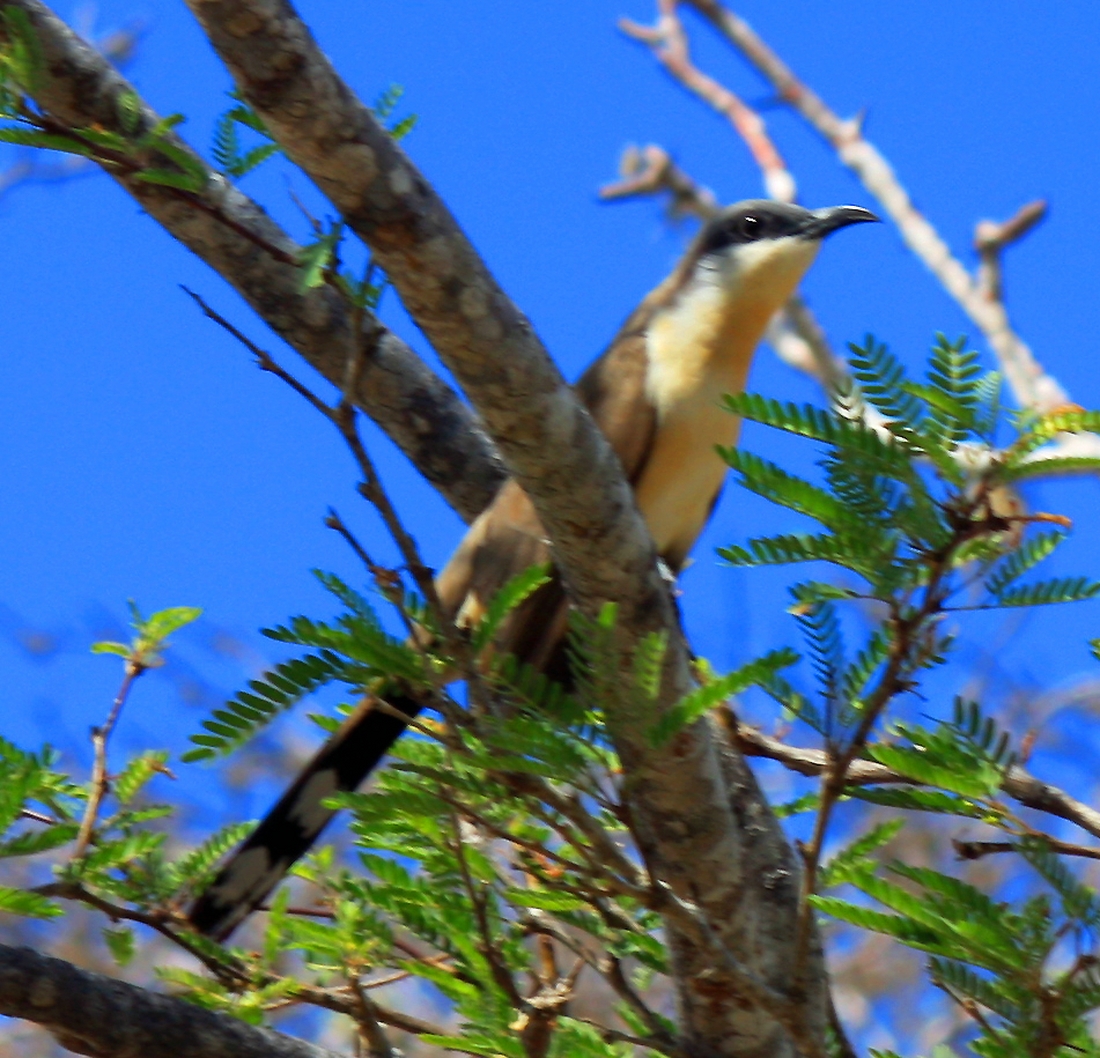Galapagos Species Database
The Galapagos Species Database shares the information about the species from our Natural History Collections.
Coccyzus melacoryphus
Cuclillo Piquioscuro, Dark-billed Cuckoo




Es una ave de unos 25 cm, con cola larga con puntos blancos, espalda gris a café, cabeza gris con negro alrededor del ojo. Por debajo, blanco ligeramente rojizo. Pico grueso curvo.
Domain
Eukaryota
Kingdom
Animalia
Phylum
Chordata
Class
Aves
Order
Cuculiformes
Family
Cuculidae
Genus
Coccyzus
Species
melacoryphus
Taxon category: Accepted
Taxon origin: Native
Preference for an altitude zone in Galapagos: Coastal zone - transition zone
Habitat preferences: Mainly closed scrub and woodland.
Distribution origin: Common on most of the larger islands and even found on some of the smaller ones such as Plaza Sur, but rare on Santiago, and there is only a single record on Santa Fé in 1906.
Natural enemies: Possibly affected by Philornis (pupae found in nests)
Map of specimen collection localities or observation records for this species in our collections database.
Distribution: Although on most of the larger islands.
- Wiedenfeld, D.A. (2006) Aves, the Galapagos Islands, Ecuador. Check List 2006 2(2): 1-27.
- Jiménez-Uzcátegui, G. Milstead, B., Márquez, C., Zabala, J., Buitrón, P., Llerena, A., et al. (2007) Galapagos vertebrates: endangered status and conservation actions. Galapagos Report 2006–2007. Charles Darwin Foundation, Puerto Ayora, p. 104–110.
- Harris, M.P. (1973) The Galápagos avifauna. Condor 75(3): 265-278.
- Fessl, B. Tebbich, S. (2002) Philornis downsi - a recently discovered parasite on the Galápagos archipelago - a threat to Darwin's finches? Ibis 144: 445-451.
- Swarth, H.S. (1931) The Avifauna of the Galapagos Islands. Occ. Pap. Calif. Acad. Sci. 18: 1-299.
- Fessl, B. Couri, M.S. & Tebbich, S. (2001) Philornis downsi Dodge & Aitken, new to the Galapagos Islands (Diptera, Muscidae). Studia Dipterologic 8: 317-322.
- Jiménez-Uzcátegui, G. Betancourt, F. (2008) Avifauna vs automotores. Informe Galápagos 2007-2008. FCD, PNG & INGALA. Puerto Ayora, Ecuador. p. 111–114.
- Hickin, N. (1979) Animal life of the Galapagos. Ferundune Books, Faringdon, U.K., 236 pp.
- Bisconti, M. Landini, W., Bianucci, G., Cantalamessa, G., Carnevale, G. Ragaini, L. & Valleri, G. (2001) Biogeographic relationships of the Galapagos terrestrial biota: parsimony analyses of endemicity based on reptiles, land birds and Scalesia land plants. J. Biogeogr. 28: 495-510.
- Freile, J.F. Santander, T., Jiménez-Uzcátegui, G., Carrasco, L., Cisneros-Heredia, D., Guevara, E., Sánchez-Nivicela, M., Tinoco, B. (2019) Lista Roja de las aves del Ecuador Quito, Ecuador. 97 pp.



Feeding type: Insectivorous
Also frugivore. Known to occasionally swallow fruits.